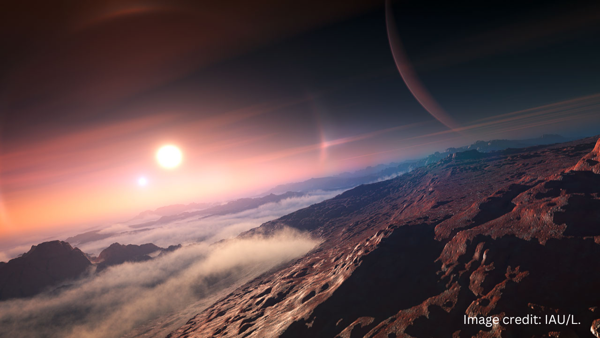
Science & Space
New Instrument Discovered By University of Cambridge To Detect Surface Water Lurks Beneath An Exoplanet's Surface
There are billions and trillions of exoplanets in the universe, but only a few thousand have been discovered, and only a few hundred of these have traceable water, but the evidence is not conclusive due to the massive distance.
Therefore, to find the trace of water conclusively, researchers from the University of Cambridge in England created a model which can predict how much water is beneath the surface of any exoplanet and how many water-rich minerals exist within a planet.
Water, along with some breathable oxygen, is one of the most important components of life anywhere in the universe. Scientists have the technology to detect the presence of any gas, including oxygen, in an exoplanet, but the only missing link was water detection, which has now been resolved.
The tool will assist scientists in estimating how much of this essential ingredient for life exists beneath the surface of any exoplanet and how exoplanets born around a violent star recover from the clamorous environment in their early days.
Most potential life-finding exoplanets orbit dwarf stars, also known as red dwarfs. These stars become red dwarfs after violent eruptions, engulfing the resources of all planets in their path, but some traces of water remain on those exoplanets even after the evaporation of the violent burst. Scientists are most interested in those plants with potential water beneath their surface.
The Cambridge University team, led by Guimond and others, demonstrated that once the planet's host star matured and cooled, interior water could replenish water on the planet's surface.
According to them, these stars replenish their water after the host stars' violent eruptions dried up the entire surface water. This is also how ponds regain their water after being dried out by excessive heat, and it replenishes its water once the environment returns to a cooler temperature.
Guimond also stated that "The model gives us an upper limit on how much water a planet could carry at depth, based on these minerals and their ability to take water into their structure."
How do exoplanets replenish their lost water?
The team discovered that the size of a planet affects how much water it can store because it determines the amount of water-rich minerals that can exist beneath its surface. This does not necessarily imply that larger planets have more water reserves.
According to the team, previous research has shown that the exoplanet, which is two to three times the size of Earth, has drier rocky mantles. The reason for this is that the upper mantle, which stores a planet's interior water, accounts for a smaller proportion of a larger planet's mass.
Temperature and pressure are the two most important factors for having water on the surface of any exoplanet. These two factors are critical for having water on the surface. These two variables combine to form the green-blue minerals wadsleyite and ringwoodite, both of which can absorb water.
These rock layers are also within volcanoes' reach, implying that volcanic activity can transport water to the surface, where it enters the atmosphere as steam. According to the researchers, the process could also transport other essential ingredients for life from the interior of the planet to its surface.
This tool and technique can also be used to detect water on Mars, the Moon, Venus, and the moons of gas giants.
For scientists, Venus and Mars are two earth twins important for finding drinkable water beneath or on the surface because scientists hope to migrate to these two earth twins in the near future if possible. Also, according to scientists, there was a lot of surface water on Mars and Venus, but it evaporated for some reason.
The findings of the team could help scientists decide which planets to search for alien life on first. This tool will be going to open a door to mankind with new opportunities, If this tool is perfect for detecting water on any planet.

0 Comments